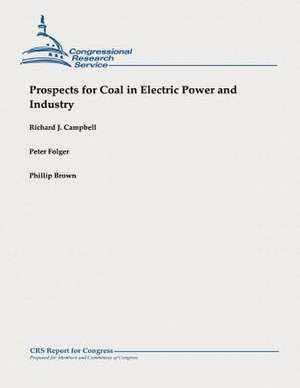Prospects for Coal in Electric Power and Industry
Autor Richard J. Campbell, Peter Folger, Phillip Brownen Limba Engleză Paperback
Preț: 86.86 lei
Nou
Puncte Express: 130
Preț estimativ în valută:
16.62€ • 17.26$ • 13.86£
16.62€ • 17.26$ • 13.86£
Carte disponibilă
Livrare economică 03-17 martie
Preluare comenzi: 021 569.72.76
Specificații
ISBN-13: 9781482764901
ISBN-10: 1482764903
Pagini: 26
Dimensiuni: 216 x 279 x 1 mm
Greutate: 0.09 kg
Editura: CREATESPACE
ISBN-10: 1482764903
Pagini: 26
Dimensiuni: 216 x 279 x 1 mm
Greutate: 0.09 kg
Editura: CREATESPACE
